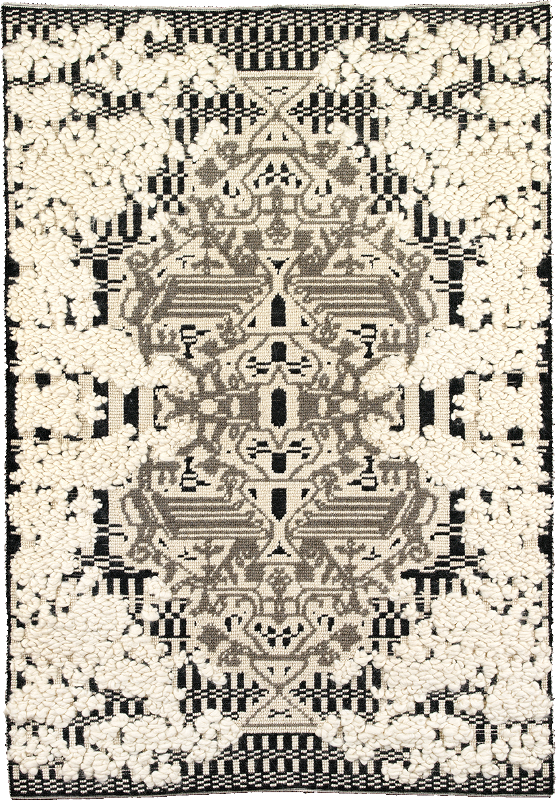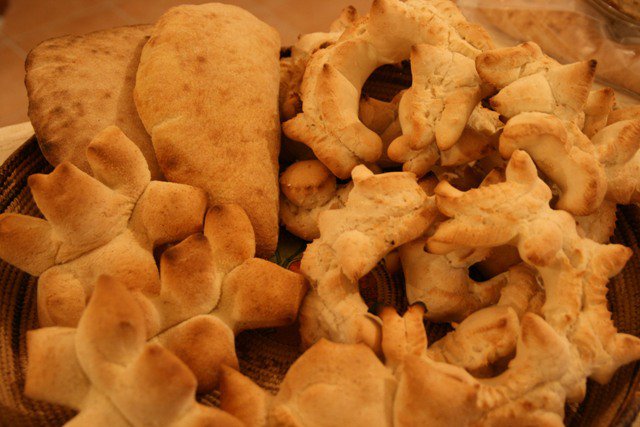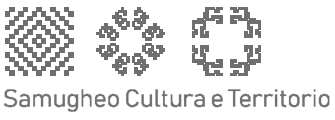Local Excellences
The excellence of Samugheo goes beyond its weaving. The town is also well known for its exquisite baked goods, and especially, its bread, which is the star of its own festival between September and October.

Immagine di Ludovico Mura
Artisanal Rugs
One of the most renowned products from Samugheo’s textile arts is most decidedly the rug, which is still made using typical Sardinian techniques: pibiones, litzos, tauledda, indente and lauru. The most popular technique, which uses a granular format, known as ‘a pibiones’ (Sardinian for grape), where the weft thread is gathered on a small metal rod to form a grain shape on the woven fabric. The rugs have decorative flower, geometric, animal figure motifs or mythological designs inspired by tradition. The materials used are sheep’s wool, cotton and linen.
Some time during the 1960s, the heavy blankets in use were gradually replaced by lighter bedcovers. At this point, the old blankets were used under tables in kitchens or dining rooms, giving rise to the culture of the rug, an item that would then go on to form part of a woman’s dowry.
With the passage of time, the Samugheo rug became a decorative furnishing item.
Samugheo Bread
The particular features of the bread from Samugheo come entirely from the original, strict factors governing production. In fact, in the past, the majority of families would grow their own grain for domestic use. The grain would regularly be sent to the horizontal water mills – three of which are still visible today – to produce the wholemeal that, after sifting in different stages through increasingly fine screens, would then become semolina, simbulla, and fine flour, as well as bran and buckwheat. All types of flour were used to make bread, which was cooked in wood ovens by the family once a week to make best use of resources and effort. The dough therefore needed to be able to sustain an average storage time in a period when there were none of the domestic appliances that make our lives so much easier today.
For this reason, the types of bread being made were distinguished according to whether destined to be eaten immediately or kept for at least a week. In the same way, bread for summer and winter was different, given that the harsh climate and difficulty in sufficiently heating the preparation room would have prevented proper leavening for some types of dough. Salt was an ingredient that was not produced locally and therefore, it was expensive and only used sparingly in the dough. This habit and consolidated tastes then meant that in spite of changed conditions, Samugheo bread is still particularly bland.

Types
The combination of all of the above factors means that there is a vast range of traditional bread, ranging from su tzichi, a hard dough in semolina, made with little water and kneaded for a long amount of time, made all year long as well as being the base for many types of ceremonial bread, to su pistoccu which is mainly made in spring or summer, differently to sa farrighingiada, and su boffollittu, different shapes, made with a soft dough using semolina and lots of water, prepared during the winter and destined to be kept for longer.
If any bread was left over and became hard, then it was used to prepare the delicious suppas, stale bread cut into pieces and cooked in mutton stock, before being covered in sheep’s milk cheese or tomato sauce.
Of the ceremonial bread made from su tzichi we should mention at least s’angulla, bread with an egg inside, eaten at Easter, sa pramighedda, a braided bread decorated with hazelnuts for eating on Palm Sunday, and su pane de is mortos, shaped to symbolise three heads in the commemorations of the dead.

